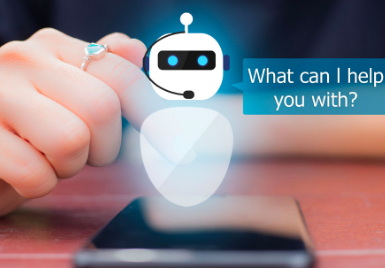Comprehensive Guide to AI Chatbots: Transforming Customer Interaction
AI chatbots are revolutionizing the way businesses interact with their customers, providing 24/7 support, improving customer experience, and enhancing operational efficiency. As artificial intelligence continues to advance, chatbots are becoming AI ChatBots sophisticated, capable of understanding and responding to a wide range of inquiries. This comprehensive guide will explore the various aspects of AI chatbots, including their types, benefits, implementation, challenges, and future trends.
1. What Are AI Chatbots?
a. Definition
- AI chatbots are computer programs that simulate human conversation using natural language processing (NLP) and machine learning algorithms. They can communicate with users via text or voice, providing automated responses to queries.
b. Types of Chatbots
- Rule-Based Chatbots: These chatbots follow predefined rules and scripts. They can only respond to specific questions with scripted answers, making them less flexible.
- AI-Powered Chatbots: Utilizing machine learning and NLP, these chatbots can understand context, learn from interactions, and provide more personalized responses. They can adapt to user behavior over time.
2. How Do AI Chatbots Work?
a. Natural Language Processing (NLP)
- NLP allows chatbots to understand and interpret human language. It involves several processes, including tokenization, intent recognition, and entity recognition, enabling chatbots to grasp the context of conversations.
b. Machine Learning
- Machine learning algorithms enable chatbots to learn from past interactions and improve their responses over time. As they receive more data, they become more adept at understanding user intent and providing relevant information.
c. Integration with APIs
- AI chatbots can integrate with various APIs to access data and perform tasks. For instance, they can retrieve information from databases, manage customer inquiries, and even facilitate transactions.
3. Benefits of AI Chatbots
a. 24/7 Availability
- Chatbots provide round-the-clock support, ensuring that customers can access assistance at any time, regardless of time zones or business hours.
b. Cost Efficiency
- Implementing chatbots can significantly reduce operational costs. By automating routine inquiries, businesses can free up human agents to focus on more complex issues, optimizing workforce productivity.
c. Enhanced Customer Experience
- AI chatbots can deliver instant responses, reducing wait times for customers. They can also personalize interactions based on user data, creating a more engaging experience.
d. Increased Lead Generation
- Chatbots can capture leads by engaging visitors on a website and collecting contact information. This proactive approach can help businesses build their customer base.
e. Data Collection and Insights
- Chatbots can gather valuable data about customer preferences, behaviors, and pain points. Analyzing this data can provide businesses with insights to improve products and services.
4. Use Cases of AI Chatbots
a. Customer Support
- Many companies use chatbots to handle customer inquiries, resolve issues, and provide product information. This allows for faster response times and improved customer satisfaction.
b. E-commerce
- E-commerce platforms utilize chatbots to assist customers in finding products, processing orders, and providing personalized recommendations based on browsing history.
c. Healthcare
- In the healthcare sector, chatbots can help patients schedule appointments, access medical information, and provide reminders for medication.
d. Banking and Finance
- Banks and financial institutions employ chatbots for tasks such as account inquiries, transaction alerts, and customer support, enhancing the banking experience for users.
e. Travel and Hospitality
- Travel companies use chatbots to assist with bookings, provide travel updates, and offer personalized recommendations for activities and accommodations.
5. Implementing AI Chatbots
a. Defining Objectives
- Businesses must first define the objectives for implementing a chatbot. This could include improving customer service, automating tasks, or enhancing engagement on digital platforms.
b. Choosing the Right Platform
- Various platforms and tools are available for building chatbots, such as Dialogflow, Microsoft Bot Framework, and IBM Watson Assistant. Selecting the right platform depends on the organization’s technical expertise and specific requirements.
c. Designing Conversational Flows
- Creating effective conversational flows is crucial for a chatbot’s success. Businesses should outline potential user queries and design appropriate responses to ensure smooth interactions.
d. Testing and Optimization
- Before launching a chatbot, extensive testing is essential to identify and rectify any issues. Post-launch, continuous optimization based on user feedback and analytics is necessary for improving performance.
6. Challenges in AI Chatbot Development
a. Understanding Context
- Despite advancements, chatbots may struggle with understanding context or handling ambiguous queries. This can lead to misunderstandings and customer frustration.
b. User Acceptance
- Some users may be hesitant to interact with chatbots due to concerns about reliability or a preference for human interaction. Ensuring a seamless handoff to human agents when needed is crucial.
c. Data Privacy and Security
- Protecting customer data is paramount. Businesses must ensure that their chatbot systems comply with data protection regulations and implement security measures to safeguard user information.
7. Future Trends in AI Chatbots
a. Enhanced Personalization
- The future of chatbots lies in deeper personalization, utilizing advanced algorithms to tailor interactions based on individual user preferences and behaviors.
b. Voice-Activated Chatbots
- As voice recognition technology improves, voice-activated chatbots will become more prevalent, allowing users to engage in conversations using natural speech.
c. Integration with Other Technologies
- Chatbots will increasingly integrate with emerging technologies like augmented reality (AR) and virtual reality (VR), providing immersive customer experiences.
d. Emotional Intelligence
- Future chatbots may incorporate emotional intelligence, enabling them to recognize and respond to user emotions, enhancing empathy in interactions.
8. Conclusion
AI chatbots are transforming the landscape of customer interaction, providing businesses with powerful tools to enhance engagement, improve efficiency, and drive growth. With their ability to deliver instant support and gather valuable data, chatbots are becoming indispensable assets in various industries.
However, implementing AI chatbots requires careful consideration of objectives, user experience, and ongoing optimization to ensure they meet customer needs effectively. As technology continues to evolve, the potential for AI chatbots will expand, offering even more innovative solutions for businesses and consumers alike. Embracing this technology can lead to significant advantages, ultimately contributing to a more connected and efficient world




